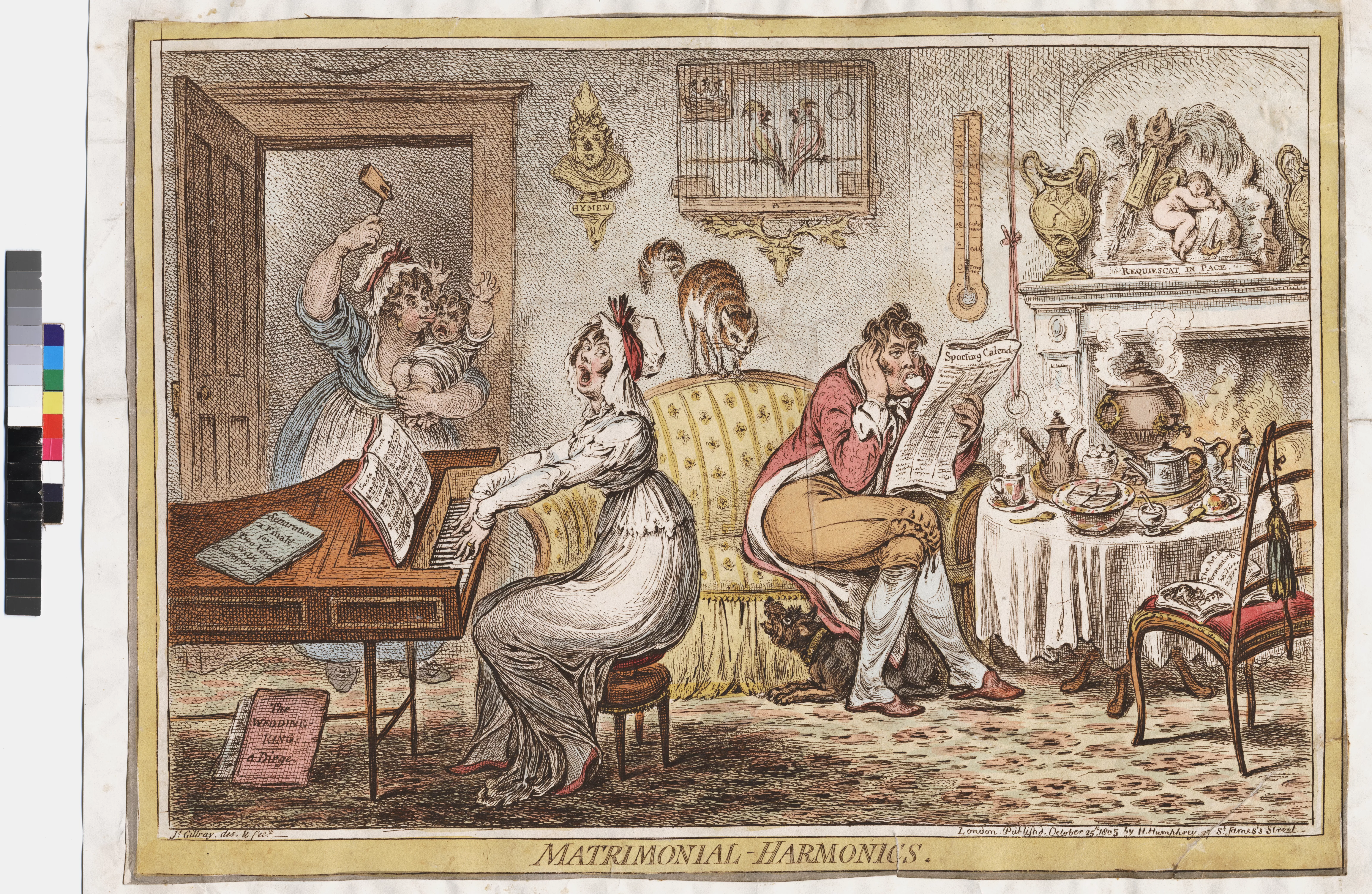Creation Date
25 September 1805
Medium
Genre
Description
When assessed with its partner print "Harmony before Matrimony," this print entertained viewers with a comic rendering of the loss of courtship-induced naïveté to painful marital discord.
The symbolism in this image depends on conventional love emblems: Hymen, Cupid, a pair of birds, and music. However, because the broken state of these symbols are used to depict disharmony, they evoke a sense of ironic disparity.
At the piano, a young wife in a drooping bonnet plays the piano and sings with a wide open mouth. She rolls her eyes back, as if to ascertain whether her husband is listening, or perhaps to ensure that she has the attention of the viewer (her other "audience"). The lyrics in front of her read, “Torture, fury, rage, despair, I cannot, cannot, cannot bear.” A maid enters from a doorway in the corner, holding a frightened looking baby to her bosom and raising a hammer-shaped toy above its head. The husband—one hand covering his ear, and a disinterested expression on his face—sits on the couch and reads a newspaper. The cluttered breakfast table includes a bottle of Holland’s (gin) and a book entitled “The Art of Tormenting." A music book entitled “Separation a Finale for Two Voices with Accompaniments” lies on the piano, and another entitled “The Wedding Ring—a dirge” lies beneath it. On the wall a thermometer displays the coldness of the room, and Hymen’s bust is broken. Cupid lies asleep above the mantle, his quiver emptied. A cat is poised on top of the couch, back arched, glaring at a dog growling from beneath the husband’s legs.
The private sphere was of fundamental importance to women’s self-definition in late eighteenth-century British culture, and music was a priority on the domestic to-do list for an upper-middle class woman. This item on the checklist was part of her general domestic duty to please, to make her home life “harmonious,” and to set a moral example for her children, a duty the young lover seems clearly capable of in "Harmony before Matrimony." This print, laden with broken love symbols and depicting a discordant relationship, suggests the futility of an ideological investment in the image presented in the partner print, and implies a need to reassess the value of the prescriptive, strictly gendered roles in both courtship and marriage. Viewers are invited to make this reassessment via the ironic way in which Gillray conveys conventional symbols of amorous harmony and domestic life—that is, by means of the special artistic force of caricature, energized by discrepant meanings, assumptions, and realities.
Publisher
Hannah Humphrey
Accession Number
805.10.25.1
Additional Information
Bibliography
George, M. Dorothy. Catalogue of political and personal satires preserved in the Dept. of Prints and Drawings in the British Museum, vol. 8. London: British Museum Dept. of Prints and Drawings, 1870-1954
Godfrey, Richard. James Gillray: The Art of Caricature. London: Tate Gallery Publishing, 2001.
Wright, Thomas, ed. The Works of James Gillray, the Caricaturist. London: Chatto and Windus, 1874.

